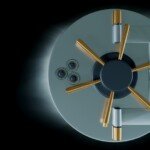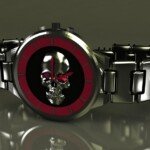Stepping into productivity: Your expert guide to buying used Haas Mill
There is no denying that the charm of CNC machining centers, especially names like Haas. However, new prices often make them stand out at many workshops. This is a smart way to buy used equipment. Featured second-hand Haas Mill offers exceptional value and years of reliable service. At Greatlight, as a professional five-axis CNC machining manufacturer leverages advanced HAAS technology every day, we gain insight into these machines. This guide draws help from our live experience to help you successfully browse the used HAAS market, avoid pitfalls and ensure the best return on your investment.
Why Haas? A brief brand overview
Haas Automation has earned a reputation as a leader in the machine tool industry, with particular emphasis on:
- Reliability and robustness: Known for durable structures suitable for harsh production environments.
- User-friendly controls: An intuitive HAAS control interface significantly reduces the operator’s learning curve.
- Widely supported and parts: An extensive network of dealers means that parts and technical support are often readily available worldwide.
- Strong resale value: Compared to many competitors, popular models have relatively better value.
Investing in a second-hand HAA usually means taking advantage of these established benefits at a fraction of the new cost.
The main things to note when buying a second-hand Haas Mill:
-
Define your needs accurately:
- Part size and complexity: What is the maximum dimension and geometric complexity of a typical part? This determines the spindle travel requirements (X, Y, Z), the size of the table, and may require options such as rotary table or 4/5 axis functionality.
- Materials and duty cycles: Would you be mainly machine aluminum, plastic or harder steel or outsiders? More demanding materials or mass production machines that require sufficient horsepower (HP), rigid structure and potentially high pressure coolant.
- Tolerance and finish requirements: High-precision parts require machine condition to be evaluated within stricter tolerances.
- Shop constraints: Consider available floor space, power specifications (voltage, phase) and compressed air requirements.
-
Deeply study specific models:
- Model History and Reputation: Study specific HAAS models (e.g. VF-2, VF-4, Mini Mill, DT-1, UMC models). Look for common known issues, upgrades in production, and general life expectancy. Online forums and communities are valuable resources.
- Manufacturing date: Newer machines usually offer newer features and may have the remaining service life, but older, well-maintained units may be firm. Request a serial number to verify age and factory options.
- Factory Installation Options (FIO): Determine what options the machine comes with and comes with a factory (e.g., rigid strike, high-speed machining, detection system, chip conveyor, TSC, CAM software lock). Verify these exist and work during the inspection. Adding options later can be expensive.
-
Carefully check the physical condition of the machine:
- Visual inspection: This is not negotiable. Looking for:
- Apparent casting damage, noticeable rust or excessive wear of paint near the edge of the table.
- Conditions covering the road – Too much dent or damage can indicate neglect or collapse.
- Lubrication points – Are grease accessories maintained? Is the oil storage reservoir full?
- Overall cleanliness inside the casing. Excessively, the affected chip can indicate poor maintenance and may cause damage over time.
- Conditions for key components:
- Method and elasticity: These are crucial to accuracy. Check scores, embellishments or noticeable wear marks. Use stick-slip exercises manually or via jogging. Excessively strong rebound or abnormal noise is a red flag.
- Spindle: Listen to run on a spindle of various rpm (especially RPM, if applicable). Vibration, grinding noise or excessive heat are the main problems. Check the spindle taper conditions for scratches or wear. Ideally, run the spindle analyzer test to check if possible and vibration signatures.
- Tool Changer (ATC): Repeat the tool. Pay attention to smooth operation, accurate tool grip and no harsh movements or errors. Check for bent or damaged arms, fingers, or flower pots.
- Dining table and workers: Check the table surface for jingle, flatness and T-slot status. Make sure to not peel off the visor’s mounting holes.
- Coolant system: Check pump, tank condition (for rust/corrosion), wires and nozzles for leakage and blockage.
- Visual inspection: This is not negotiable. Looking for:
-
Evaluate control systems and electronic devices:
- Control Generations: Identify specific HAAS control models (e.g. NGC-next generation control, older HAAS control). NGC controls provide important advantages and features. Older controls may be reliable, but may lack modern features and long-term support windows.
- Functional check: Power on the machine. Execute a simple program (ideally, see step 6). Make sure all buttons, jogging handles, knobs and display functions are correct. Check for error codes or alarms recorded in machine history.
- Rebound compensation and parameters: Access machine parameters. Check out the settings for rebound compensation across the axis. High compensation values indicate significant mechanical wear. Verification key parameters have not changed dramatically yet.
-
Requirements maintenance history and documentation:
- Service Record: Require any Records of preventive maintenance, repairs, major component replacements (such as spindles or ball screws) and calibration. Regular, documented services are a huge advantage. Lack of records does not mean a bad machine, but requires additional review.
- Operation history: Understand the workload of the machine. Is it lightly used in a prototype lab or is it running hard in production? While subjective, it provides context.
- document: If so, collect manuals (operation, maintenance, electrical schematics). Let this simplify future troubleshooting.
-
Stick to test run:
- warm up: Let the machine run during the warm-up cycle.
- Jogging and home: Pass all axes through their entire journey at various feed rates. Go home accurately.
- Actual cutting test: It is crucial that actual cutting tests be performed. Machine a material that meets your needs. Includes bagging, profile, drilling (especially the presence of rigid faucets) and possible features. This reveals true performance, such as spindle power under load, axis tracking in complex paths (listening to servo hunting/strain), and final part accuracy. Measurement test part!
- Test all features: Workout options such as probes, TSCs, if equipped with rotation, and automatic tool changers under load.
-
Consider the total cost of ownership:
- Purchase price: Comparisons with similar models on the market and adjustments were made to conditions and choices.
- Repair costs immediately: What job is essential forward Put this machine into production (e.g., scratching, batting screw replacement, spindle reconstruction/new spindle, calibration)? Get a quote.
- Tools and fixes: Budget, for necessary access, tool holders, labor and cutting tools.
- Transportation and Rigging: Costs vary greatly depending on location and machine size/weight.
- Install and start: Costs of electrical connection, upgrade and commissioning.
- Warranty Options: Some well-known second-hand machinery dealers offer limited warranty. factor.
- Understand the seller:
- Reputation and Transparency: Purchase directly from a well-known dealer from a trusted company with honesty and proper pre-issue inspection or directly from a trusted company that is well maintained. Avoid sellers being reluctant to show the machine running or provide detailed information.
- Return Policy/Warranty: Understand the terminology (if present).
- Professional inspection: For high value purchases or purchases from distant or inadequate sellers, it is highly recommended to hire an independent third-party inspection service.
In short: invest in machines with confidence
Buying a used Haas Mill can be a transformative move for your store, unlocking important machining features at a strategic price. While upfront discounts are attractive, success depends on meticulous research, thorough physical and operational examinations, and a clear understanding of your specific needs and the real costs involved.
At Greatlight, our extensive experience in operating and maintaining advanced five-axis CNC machining centers, including complex HAAS equipment, emphasizes the importance of machine condition and setup. Whether you expand your capabilities or start your processing journey, diligence in the purchasing process can be translated directly into productivity and profitability. Haas reviewed correctly using the principles outlined here has become a reliable partner for many years.
Ready to focus on precise parts production rather than machine shopping? Greatlight Leveras Lovers Prount Edge five-axis CNC technology and meticulous production process to skillfully solve complex metal parts manufacturing challenges, providing fast turnover, a wide material range, and seamless one-stop after-processing and completion services. We provide high precision, quality and value – Customize your precision parts at the best price today!
FAQ: Buy a second-hand Haas Mill
Question 1: Is it worth buying used haas compared to cheaper new brand mills?
A1: Usually, yes. Haas’ reputation for reliability, user-friendly control, extensive support and strong resale value often makes reviewed second-hand Haas a smarter long-term investment than unknown, under-supported, low-cost new machines. You are paying for proven designs and infrastructure.
Q2: What is the most reliable old HAAS model?
A2: Models such as the VF-1 to VF-3 series (NGC front control ERA) have achieved legendary state of durability. However, older generation controls may eventually face obsolete parts. The VF-1 or VF-2 from the late 1990s/early 2000s are often considered a solid workhorse. Maintenance history records of pure age are always given priority.
Q3: How many hours "Too many" On second-hand HAAS spindle?
A3: There is no number. It depends entirely on maintenance and operating conditions. The main wear at 5000 rpm is much less than the continuous operation at 15,000 rpm. Check the maintenance records for lubricating. Listen carefully during the test. Look for potential high load hours in control diagnosis. Consider spindle health analysis that is critical to suspicious units.
Question 4: What is the biggest red flag when checking a second-hand HAA?
A4: Key red flags include:
- Excessive rebound can be seen during jogging or significant rebound compensation.
- Abnormal spindle noise (grinding, screaming) or excessive vibration/heat.
- jerky tool changer operation or frequent error loading.
- Apparent unrepaired collision damage (bending assembly, cracked casting).
- Refuse to conduct comprehensive testing.
- Complete lack of maintenance records.
- Blocking sellers are reluctant to answer technical questions.
Question 5: Should I buy directly from another company or use a second-hand machinery dealer?
A5: Both have pros and cons. Direct from the company (especially the one you know) can offer lower prices and insight into machine history, but there may be no warranty. Reputable dealers will often offer inspections, limited warranty, shipping coordination and a wider range of options, but that is higher costs. Thoroughly verify the reputation of the dealer.
Question 6: What is the budget for potential repairs on the second-hand machine?
A6: This is highly variable. As a preventive buffer, consider putting 10-25% of the purchase price on hold for accidental repairs and necessary re-adjustment for the first year. This can cover anything from minor leaks to motor issues or controller cards. The more thorough your pre-buy check, the more you can predict this.
Question 7: Is HAAS Next Generation Control (NGC) worth paying for on a second-hand device?
A7: Usually, yes, if it’s within the budget. NGC provides significant improvements: faster handling of complex tool paths, modern networking capabilities (remote monitoring), better graphics, updated user interface, long-term support assurance, advanced features such as dynamic work offsets, and improved memory capabilities. It is more future-proof than older controls.

















